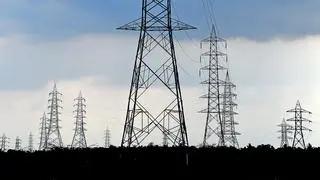Financial stocks have witnessed prolonged under-performance due to macro economic uncertainty and concerns in certain segments of lending. One such issue that has been affecting Infrastructure Finance Company (IFC) stocks is the concern over solvency of State electricity boards (SEBs) to which these companies have lent.
Decline in the stock price of REC over the last five months has brought down the stock's valuation to compelling levels. This provides good opportunity for investors with over a two-year perspective to accumulate the stock, as concerns on interest rate spread shrinking significantly and SEBs defaulting appear overdone.
At the current price of Rs 198, the stock trades at 1.1 times its FY-13 estimated book value and 5.6 times FY-13 earnings. The valuation appears rather attractive for a company whose earnings growth and loan book growth continue to be in excess of 20 per cent. Given that REC's return on equity of 20 per cent (FY-11) can be maintained at current levels going forward, the stock looks deeply under-valued.
On a P/BV basis, REC is at a slight premium to Power Finance Corporation as the former earns better spreads. REC's loan book grew 26 per cent compounded annually during the period FY09-11 while profit growth during the same period was 42 per cent.
REC's unutilised sanctions (funds sanctioned but not disbursed), as of March 2011, stood at about Rs 1.5 lakh crore which is more than double the size of the current loan book, providing visibility for loan growth. Additionally, that 70 per cent of the power sector funding requirement of Rs 11 lakh crore in the Twelfth Plan (2012-17) is expected to be by way of debt, also provides visibility over a longer-term. It is noteworthy that many banks (REC's main competitors) are close to the maximum limits in terms of infrastructure sector prudential exposure and would, therefore, be constrained from expanding their loan book in this sector significantly.
Funding concerns
REC, thanks to its access to 54EC capital gain bonds, has relatively lower cost of funds than PFC. Additionally, REC in the previous fiscal year hasn't leveraged fully on the then newly granted Infrastructure Financing Status.
Further utlisation of the same can help contain the sharp rise in the cost of borrowings. Higher overseas borrowing and retail infrastructure bond issuances may also keep interest cost under check while hike in lending rate by REC to the tune of one percentage point would protect the yields to some extent.
Given this scenario, margin compression may not be significant. The cost of overseas borrowing and retail bond during the March quarter on an annualised basis were 3.44 per cent and 8.14 per cent respectively as against the average 9.16 per cent cost of taxable bonds.
REC is also actively scouting for other funding sources. The management has indicated that it may borrow around $1.5 billion of external commercial borrowings and additional $1 billion by way of foreign currency convertible bonds this fiscal. On the asset side, the proportion of loans extended to private players has been on the rise. The management has stated that the high yielding private sector loans will increase to 15 per cent by next fiscal. Another reason the margins may not fall sharply is that around Rs 12,900 crore of assets will get re-priced (by way of hike in lending rates) while only Rs 9637 crore worth of liabilities will be re-priced during FY12.
By hiking lending rates, REC made sure that the incremental yields will provide some hedge against the rise in borrowing costs. Therefore, on a loan book growth of more than 20 per cent, net interest income growth can be expected to be in excess of 15 per cent next fiscal. Interest spread for the year ended FY-11 was 3.36 per cent (NIM 4.45 per cent).
Asset quality blues
While interest rate rise is a lesser worry, credit risk of the borrower is perceived as a larger concern. This, despite REC's negligible (0.002 per cent) net non-performing asset ratio as of March 2011. REC has around 51 per cent exposure to the troubled transmission and distribution (T&D) sectors.
There have been concerns that SEBs (accounting for 83 per cent of REC's loan book) may not be able to service interest and may default what with mounting losses. However, the escrow mechanism, which will ensure that REC has access to cash flows before SEBs can use it for other operating purposes would protect the financing company to some extent. Additionally, the State government guarantees are also being provided to tide over the near term defaults. A few SEBs have begun hiking tariffs to at least recover some costs. States such as MP, Orissa, Assam and Bihar have hiked power tariffs.
Over a medium term, power reforms such as incentivising SEBs that reduce their T&D losses and improving the collection efficiency would benefit them. The Tamil Nadu SEB, one of larger SEBs (13 per cent of REC's exposure) is in troubled waters.
However, some of the exposure is through a joint venture with NTPC while a part of it is towards generation projects. Management has stated that REC may restructure some loans, if necessary, by extending the tenor of the loan (not by reducing interest). Additionally, REC initiated provisioning by setting aside 3 per cent of the net profits to protect against future losses. It also increased the risk weights for SEB with state guarantees to 100 per cent from 20 per cent, thereby setting aside more capital.








Comments
Comments have to be in English, and in full sentences. They cannot be abusive or personal. Please abide by our community guidelines for posting your comments.
We have migrated to a new commenting platform. If you are already a registered user of TheHindu Businessline and logged in, you may continue to engage with our articles. If you do not have an account please register and login to post comments. Users can access their older comments by logging into their accounts on Vuukle.